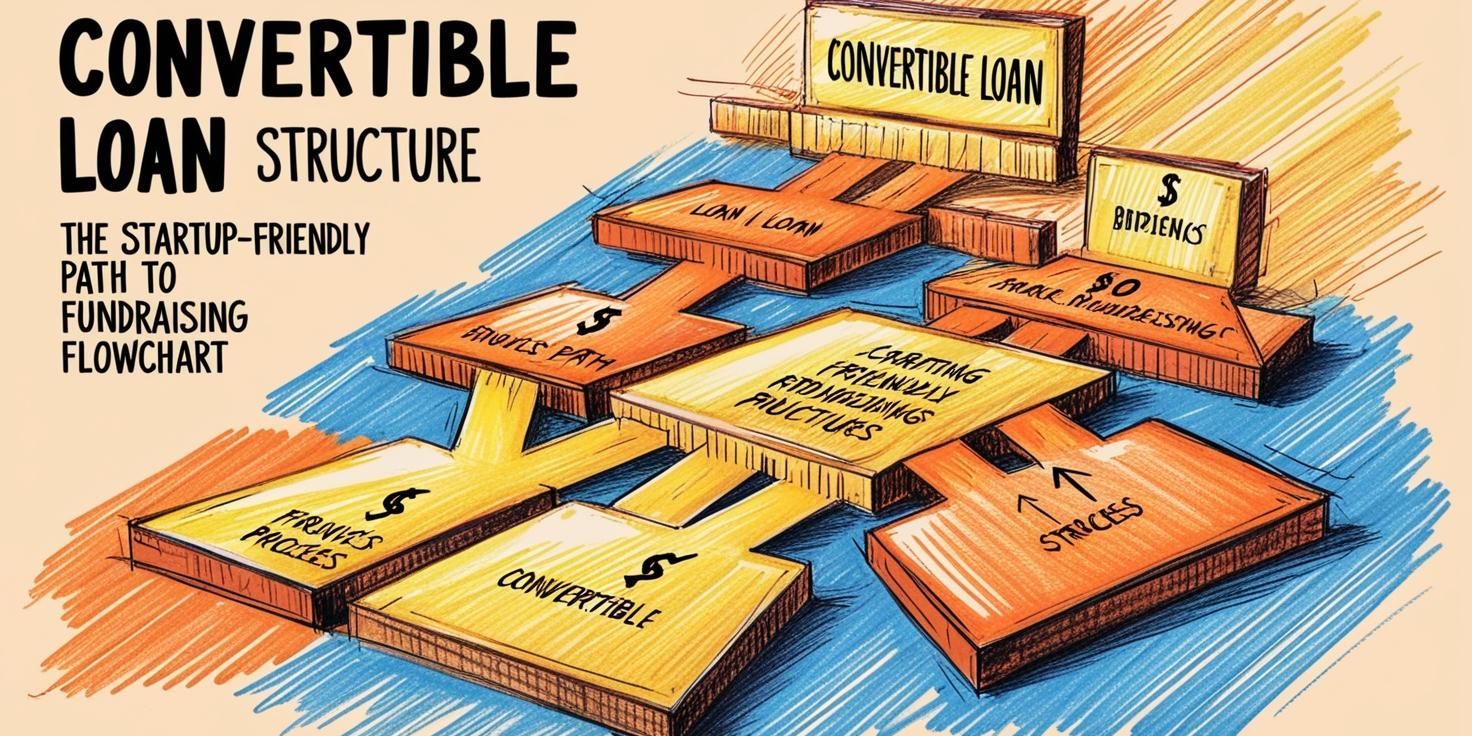Convertible Loan Structure: The Startup-Friendly Path to Fundraising 🚀

What is a Convertible Loan Structure?
A convertible loan structure (or convertible note) is a type of debt financing that startups often use to raise capital. It starts as a loan but gives the lender the option to convert the loan amount (plus accrued interest) into equity in the company at a future date, typically during a subsequent funding round.
This structure is popular with startups because it delays the need to determine a valuation while still providing the capital needed for growth.
Key Features of a Convertible Loan Structure
1. Debt with the Option to Convert:
• Starts as a loan with a maturity date and interest rate.
• Converts into equity when a trigger event (like a funding round) occurs.
2. Conversion Terms:
• Conversion Price: The price per share at which the loan converts to equity.
• Discount Rate: Lenders often get a discount (e.g., 20%) on the share price during the future funding round.
• Valuation Cap: Sets a maximum company valuation for calculating conversion, protecting early investors if the company raises at a high valuation later.
3. Maturity Date:
• If the loan doesn’t convert before the maturity date, it must be repaid, often with accrued interest.
4. Interest Rate:
• Accrued interest may also convert into equity along with the principal amount.
5. Trigger Events:
• The loan converts during a qualified financing event, such as a Series A round, or at the discretion of the lender under certain conditions.
Why Use a Convertible Loan Structure?
1. For Startups:
• Avoids setting a valuation early, which can be challenging for pre-revenue or early-stage companies.
• Simplifies fundraising by focusing on terms rather than detailed equity negotiations.
• Delays dilution until the next funding round.
2. For Investors:
• Combines the lower risk of debt with the upside potential of equity.
• Offers preferential terms like discounts and valuation caps, ensuring a better equity position in the future.
Example of a Convertible Loan Structure
Let’s assume:
• A startup raises $500,000 through a convertible note.
• Terms include:
• Discount Rate: 20%
• Valuation Cap: $5M
• Interest Rate: 5% annually
Scenario:
• After 1 year, the startup raises a Series A round at a $10M valuation, with new investors paying $10/share.
Conversion:
1. Using Valuation Cap:
• Valuation is capped at $5M for the convertible noteholders, so the conversion price is:
{Conversion Price} = {{Valuation Cap}/{Shares Outstanding}} = {5M}/{Shares Outstanding}
This provides noteholders a better deal than the Series A investors.
2. Using Discount Rate:
• If the valuation cap wasn’t triggered, the noteholders would convert at a 20% discount:
If the valuation cap wasn’t triggered, the noteholders would convert at a 20% discount:{Discounted Price} = {Share Price} * (1 - {Discount Rate}) = 10 * 0.8 = $8/share
3. Interest:
• Interest of 5% is added to the principal, increasing the amount converted to equity.
Result:
• Noteholders get more shares than Series A investors for the same investment amount due to the discount or cap.
Advantages of Convertible Loans
For Startups:
1. Faster and simpler than equity fundraising.
2. Avoids early-stage valuation disagreements.
3. Delays dilution until a future funding round.
For Investors:
1. Offers downside protection (as debt) with equity upside potential.
2. Provides favorable conversion terms like discounts and valuation caps.
3. Reduces risk in uncertain startup stages.
Disadvantages of Convertible Loans
For Startups:
1. Accruing interest and repayment obligations can strain finances if conversion doesn’t happen.
2. Valuation caps may create issues with future equity pricing.
For Investors:
1. Risk of losing value if the startup fails to raise additional funding or grows slower than expected.
2. Subordinate to other debts if the company dissolves.
Conclusion
A convertible loan structure is a flexible, startup-friendly financing option that bridges the gap between seed funding and venture capital. It benefits both startups and investors by combining the simplicity of debt with the growth potential of equity. While it has its risks, it’s an invaluable tool for early-stage fundraising when structured thoughtfully.